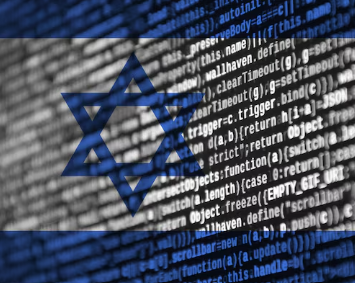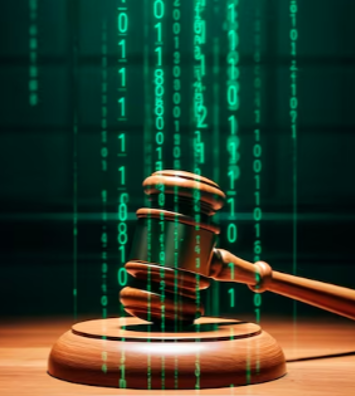Article by Clyde Shuman
The U.S. Court of Appeals for the Second Circuit has held that even “temporary” artwork, such as graffiti, may achieve recognized stature so as to be protected from destruction by the Visual Artists Rights Act of 1990 (“VARA”). In Cohen v. G&M Realty LP, case number 18-538, the Court affirmed a district court judgment awarding statutory damages to graffiti artists who had painted on buildings collectively known as 5Pointz, in Long Island City, New York, agreeing that the work was protectable even though “temporary” in nature and further finding that the acts of defendants-appellants developers in whitewashing the aerosol artwork constituted willful violations of the statute.
By way of background, beginning in 2002, Gerald Wolkoff, one of the defendants-appellants developers, undertook to install artwork in a series of dilapidated warehouse buildings that he owned in Long Island City. Wolkoff enlisted a distinguished aerosol artist to turn the warehouses into an exhibition space for artists. Various artists rented studio spaces in the warehouses and filled the walls with aerosol art. The site, known as 5Pointz, evolved into a major global center for aerosol art, attracting thousands of daily visitors, numerous celebrities, and extensive media coverage.
The artwork at 5Pointz was segregable on the basis of lifespan, with some of the work having been repeatedly painted over. Walls were divided into “short‐term rotating walls,” where works would generally last for days or weeks, and “longstanding walls,” which were more permanent and reserved for the best works at the site. During its lifespan, 5Pointz was home to a total of approximately 10,650 works of art.
In May 2013, Wolkoff sought approvals to demolish 5Pointz and to build luxury apartments on the site. Cohen, the artist enlisted by Cohen, and who had operated as a curator for 5Pointz, sought to have 5Pointz designated a site of cultural significance. Unsuccessful, Cohen and other 5Pointz artists sued under VARA to prevent destruction of the site. (VARA grants visual artists certain “moral rights” in their work.)
On November 12, 2013, the district court denied plaintiffs’ application for a preliminary injunction, telling the parties that a written opinion would soon follow. That night, Wolkoff began to destroy the artwork. He banned the artists from the site and refused them permission to recover any work that could be removed. Several nights later (before the district court’s written opinion could issue), Wolkoff deployed a group of workmen who, at his instruction, whitewashed the art.
The district court’s opinion, issued November 20, 2013, concluded that the question of whether certain 5Pointz paintings had achieved recognized stature, was best reserved for trial.
Following the destruction of the art, nine additional artists sued Wolkoff. The two lawsuits were consolidated for trial primarily on whether the artwork had achieved recognized stature and, if so, the value of the art Wolkoff destroyed. Following a three‐week trial, an advisory jury verdict finding violations of VARA as to 36 of the 49 works that were whitewashed, the district court subsequently found that 45 of the works had achieved recognized stature, that Wolkoff had violated VARA by destroying them, and that the violation was willful. More specifically, the court observed that the works “reflect[ed] striking technical and artistic mastery and vision worthy of display in prominent museums if not on the walls of 5Pointz.”
The district court awarded statutory damages, and further found that Wolkoff had acted willfully. The court referred to Wolkoff’s whitewashing of the artwork as an act out of “pure pique and revenge for the nerve of the plaintiffs to sue to attempt to prevent the destruction of their art.” The court awarded the maximum statutory damages for each of the 45 works, for a total of $6.75 million.
On appeal, the Second Circuit descried the scheme of moral rights for artists created by VARA, including, relevant here, the right, given “the author of a work of visual art,” “to prevent any destruction of a work of recognized stature.” The Court also noted that VARA contains specific provisions governing artwork incorporated into a building, e.g., via aerosol (“graffiti”) art. Particularly relevant, VARA provides that “[i]f the owner of a building wishes to remove a work of visual art which is a part of such building and which can be removed from the building without the destruction, distortion, mutilation, or other modification of the work,” then the artist’s rights prevail unless one of two things has occurred: (i) the building’s owner “has made a diligent, good faith attempt without success to notify the author of the owner’s intended action affecting the work of visual art”; or (ii) the owner has “provide[d] such notice in writing and the person so notified failed, within 90 days after receiving such notice, either to remove the work or to pay for its removal.”
The focus of the parties’ dispute on appeal was whether the works at 5Pointz were works of “recognized stature,” thereby protected from destruction VARA. The Court began by defining a work of “recognized stature” as “one of high quality, status, or caliber that has been acknowledged as such by a relevant community.” Per the Court, the “relevant community” would consist of “the artistic community, comprising art historians, art critics, museum curators, gallerists, prominent artists, and other experts.” Aside from the rare case where an artist or work is of such prominence that the issue of recognized stature need not be tried, expert testimony or substantial evidence of non‐expert recognition would generally be required to establish recognized stature.
In this case, the Second Circuit found that the district court did not commit clear error when it found that the 5Pointz artworks had achieved recognized stature. The Court expressly rejected Wolkoff’s contention that most of the works in question were temporary in nature, and thus could not meet the “recognized stature” requirement. Per the Court, nothing in VARA excludes temporary artwork from attaining recognized stature. Moreover, even Wolkoff’s own expert acknowledged that temporary artwork could achieve recognized stature. The Court also referred to recent “temporary” works by Christo and Banksy, that had achieved “recognition status” and would have been protected under VARA.
The Court said, “Although a work’s short lifespan means that there will be fewer opportunities for the work to be viewed and evaluated, the temporary nature of the art is not a bar to recognized stature.”
The Court also rejected Wolkoff’s argument that because the artists were aware that the 5Pointz buildings might eventually be torn down, they should have expected their work to be destroyed. The Court pointed to the district court opinion, which correctly observed that VARA accounts for this possibility. The Court found that it was undisputed that Wolkoff did not follow the statutorily mandated procedures for removing the art from the buildings.
The Court further rejected Wolkoff’s argument that the district court erroneously focused on recognized quality, rather than recognized stature, which must be assessed at the time of a work’s destruction, not at the time of trial. The Court found that the district court’s detailed findings show it did not improperly focus on recognized quality as opposed to recognized stature. Moreover, the district court expressly said that the “focus of [its] decision was the recognition the works achieved prior to the whitewash.” The Court also rejected Wolkoff’s contention that the district court erroneously focused on the stature of the 5Pointz site rather than the individual works. The Second Circuit found that the district court considered the individual works at the site and determined that some were not of recognized stature.
Regardless, the Court said that “the site of a work is relevant to its recognition and stature and may, in certain cases, render the recognition and stature of a work beyond question,” citing the Louvre and the Prado. In this case, the Court said, “[t]he appearance of a work of art at a curated site such as a museum or 5Pointz means that the work has been deemed meritorious by the curator and therefore is evidence of stature. When the curator is distinguished, his selection of the work is especially probative.”
The Second Circuit also found no clear error in the district court’s finding of willfulness, noting that Wolkoff admitted his awareness, prior to destroying 5Pointz, that the artists were pressing VARA claims. Indeed, Wolkoff testified that, although he was advised by counsel both before and after the destruction, he chose “to hire people to whitewash[] it in one shot instead of waiting for three months,” The district court found that this testimony evinced “a deliberate choice to violate VARA rather than to follow the statutory notice procedures.”
The Second Circuit continued:
Most troubling to the district court and to us is Wolkoff’s decision to whitewash the artwork at all. Nothing in the record indicates that it was necessary to whitewash the artwork before beginning construction of the apartments. The district court found that Wolkoff could have allowed the artwork to remain visible until demolition began, giving the artists time to photograph or to recover their work. Instead, he destroyed the work immediately after the district court denied the preliminary injunction and before the district court could finalize its promised written opinion.
Finally, the Court rejected Wolkoff’s challenge to the amount of the statutory damages awarded, finding no abuse of discretion by the district court. Instead, the district court “carefully considered the six factors relevant to a determination of statutory damages and concluded that ‘Wolkoff rings the bell 10 on each relevant factor.’”



